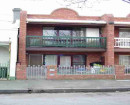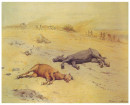Back to search results
Coburg Drive-In
155 Newlands Road,, COBURG VIC 3058 - Property No B7280
Coburg Drive-In
155 Newlands Road,, COBURG VIC 3058 - Property No B7280
All information on this page is maintained by National Trust.
Click below for their website and contact details.
National Trust
-
Add to tour
You must log in to do that.
-
Share
-
Shortlist place
You must log in to do that.
- Download report
On this page:
Statement of Significance
What is significant? Coburg Drive-in opened with one screen in 1965 as part of the Big 6 chain of drive-ins, under the direction of Sillman and Sharp, drive-in impresarios. The ticket box, bio box and diner all appear to date from this period. In 1967, it was acquired by Hoyts, and like virtually all Drive-ins in Victoria, faced closure and sale in the 1980s. It did in fact close in 1984, but attempts to sell failed. With the closure of all other Drive-ins in the northern suburbs, Village joined with Hoyts to re-open the venue in1987 as a twin, when the second screen was installed. It remained successful, and the third screen was added in 1995. The additional screens occupy space formerly occupied by parking rows for the original screen, and utilize the original bio-box. The screen in field 1, which measures 33 metres across, is believed to be the widest screen in the southern hemisphere. The heritage of the Drive-in experience has been made a feature, with vintage signs now lining the driveway entrance to the ticket box, which is topped with a Dodge Phoenix car. Inside the diner, retro booths can be found, complete with jukebox, pinball, posters, laminated seats and tables, and chequered-board floors. Original 1950s animated ads and intermission clocks ran every night promoting the burgers and Cokes in the retro diner. Speakers are still on the posts, but high quality FM stereo sound is available also. The Coburg Drive-in, Australia's largest, holds up to 900 cars.
How is it significant? The Coburg Drive-in is significant for historic and social reasons at a state level.
Why is it significant? The Coburg Drive-in, which opened in 1965, is historically and socially significant as one of only four drive-ins in Victoria to survive fully intact and still operating. These three, the Coburg Triple, Dandenong Twin and Dromana Triple, represent the last remnants of a once extremely popular cultural phenomenon. Inspired by American cultural trends, drive-ins, like motels, were a new type of private or domestic space, a mobile extension of the family living room, and characterized a trend in personal behaviour to be less formal and inhibited in public spaces. Drive-ins grew out of the growing popularity of cars, and provided an easy and convenient form of entertainment. They catered, for example, for people who had problems with parking and walking; young children; and teenagers and young adults who were attracted to particular film genres and intimate evenings.
Drive-ins were extremely popular from the late 1950s until the 1960s and late 1970s, when, with the supremacy of television, then video and multi-cinema complexes, audiences began to dwindle. Coburg's poor location, which was unattractive to development, and the installation of two other screens, ensured its survival. Coburg enjoys a loyal patronage from suburbs all over Melbourne and towns across the state.
Classified: 01/05/2007
How is it significant? The Coburg Drive-in is significant for historic and social reasons at a state level.
Why is it significant? The Coburg Drive-in, which opened in 1965, is historically and socially significant as one of only four drive-ins in Victoria to survive fully intact and still operating. These three, the Coburg Triple, Dandenong Twin and Dromana Triple, represent the last remnants of a once extremely popular cultural phenomenon. Inspired by American cultural trends, drive-ins, like motels, were a new type of private or domestic space, a mobile extension of the family living room, and characterized a trend in personal behaviour to be less formal and inhibited in public spaces. Drive-ins grew out of the growing popularity of cars, and provided an easy and convenient form of entertainment. They catered, for example, for people who had problems with parking and walking; young children; and teenagers and young adults who were attracted to particular film genres and intimate evenings.
Drive-ins were extremely popular from the late 1950s until the 1960s and late 1970s, when, with the supremacy of television, then video and multi-cinema complexes, audiences began to dwindle. Coburg's poor location, which was unattractive to development, and the installation of two other screens, ensured its survival. Coburg enjoys a loyal patronage from suburbs all over Melbourne and towns across the state.
Classified: 01/05/2007
Show more
Show less
-
-
-
-
FORMER NORTHCOTE CABLE TRAMWAYS SITE
 Victorian Heritage Register H2129
Victorian Heritage Register H2129 -
COBURG DRIVE-IN
 Victorian Heritage Register H2218
Victorian Heritage Register H2218 -
BROADMEADOWS 1
 Victorian Heritage Inventory
Victorian Heritage Inventory
-
-








